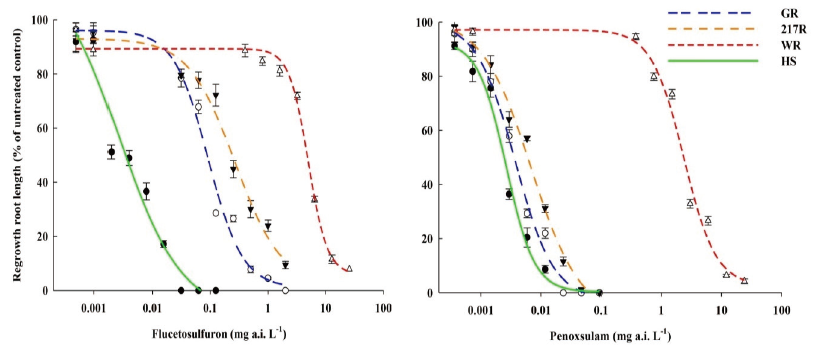Abstract
Figures & Tables

Fig. 1. Dose-response for regrowth root length of the susceptible biotype HS (●) and acetolactate synthase (ALS)-inhibitor-resistant biotypes GR, 217R, and WR (○, ▼, and △) of with a range concentration of flucetosulfuron and penoxsulam. Data were analysed using the log-logistic equation. Vertical bars represent 95% standard error of the mean.


